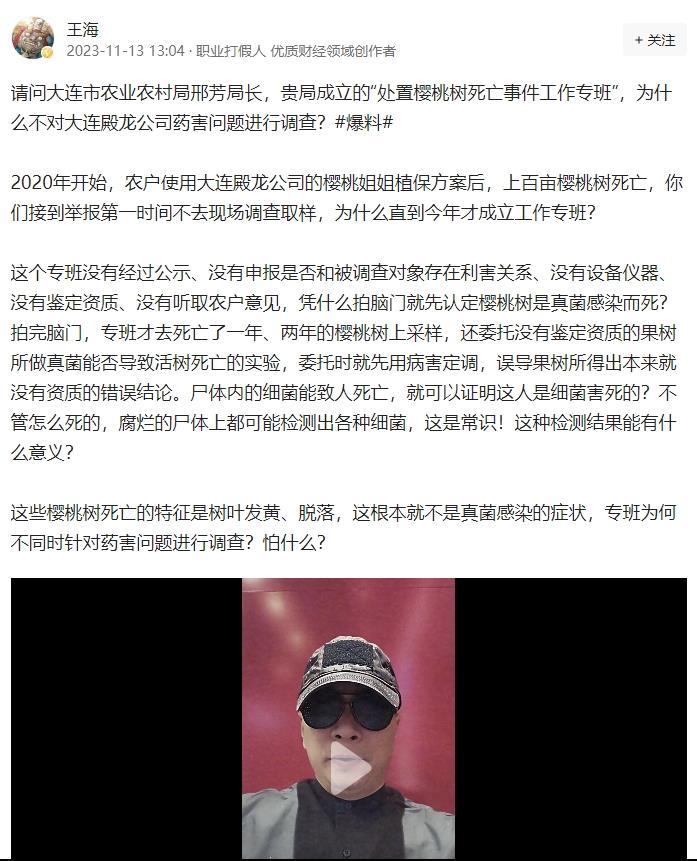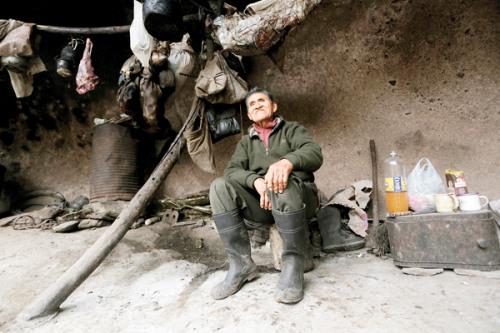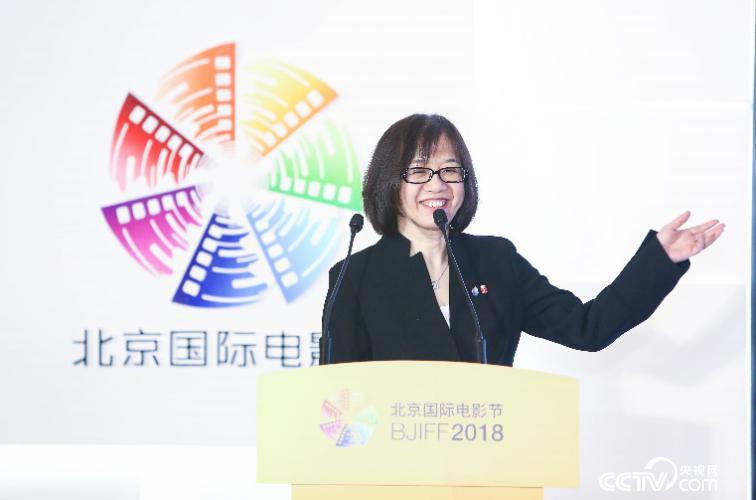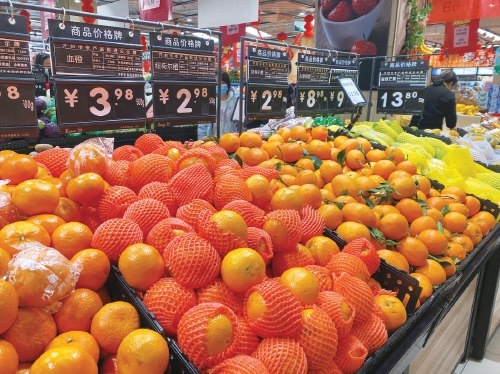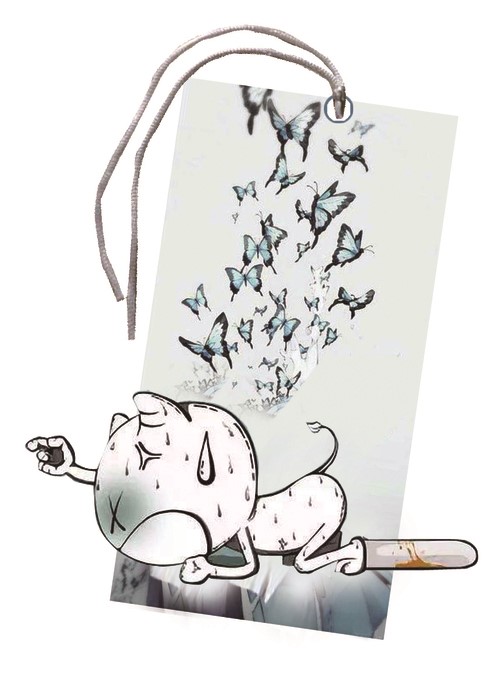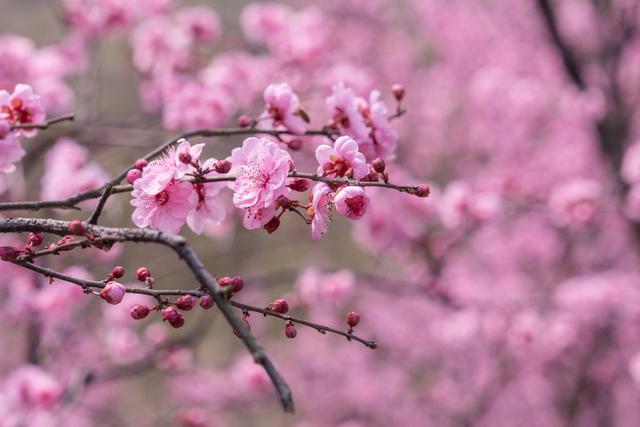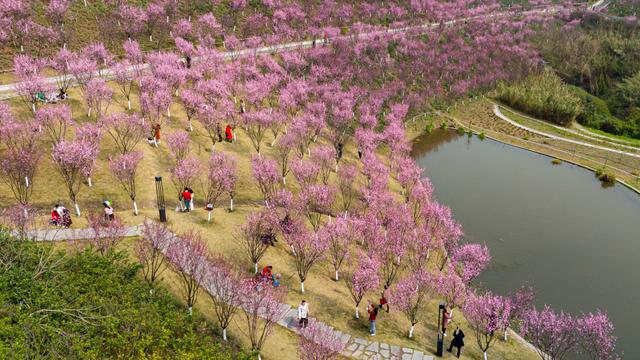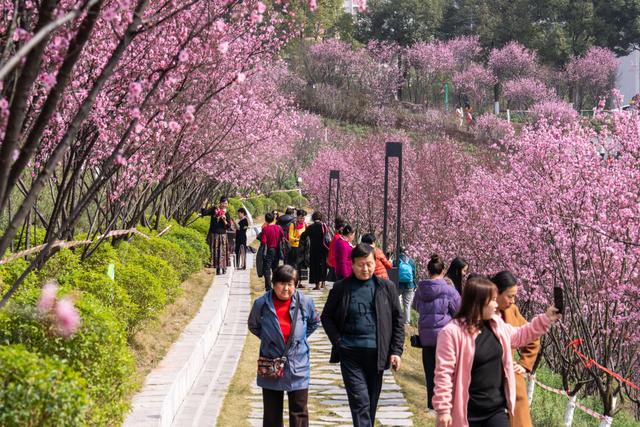The State Council on printing and distributing the new period to promote the integrated circuit industry and
Notice of some policies on high-quality development of software industry
Guo Fa [2020] No.8
People’s governments of all provinces, autonomous regions and municipalities directly under the Central Government, ministries and commissions and institutions directly under the State Council:
The "Several Policies for Promoting the High-quality Development of Integrated Circuit Industry and Software Industry in the New Period" are hereby printed and distributed to you, please earnestly implement them.
the State Council
July 27, 2020
(This piece is publicly released)
Promoting integrated circuit industry and software industry in the new period
Some policies for high-quality development
Integrated circuit industry and software industry are the core of information industry, and they are the key forces to lead a new round of scientific and technological revolution and industrial transformation. Since the issuance of the Notice of the State Council on Printing and Distributing Policies to Encourage the Development of Software Industry and Integrated Circuit Industry (Guo Fa [2000] No.18) and the Notice of the State Council on Printing and Distributing Policies to Further Encourage the Development of Software Industry and Integrated Circuit Industry (Guo Fa [2011] No.4), China’s integrated circuit industry and software industry have developed rapidly, which has strongly supported the national information construction and promoted the sustained and healthy development of the national economy and society. In order to further optimize the development environment of integrated circuit industry and software industry, deepen industrial international cooperation, and enhance industrial innovation ability and development quality, the following policies are formulated.
First, fiscal and taxation policies
(1) Enterprises or projects that are encouraged by the state to produce integrated circuits with a line width of less than 28 nanometers (inclusive) and have been in operation for more than 15 years shall be exempted from enterprise income tax from the first year to the tenth year. Enterprises or projects that are encouraged by the state to produce integrated circuits with a line width of less than 65 nanometers (inclusive) and an operating period of more than 15 years are exempted from enterprise income tax from the first year to the fifth year, and the enterprise income tax is levied at a statutory rate of 25% in the sixth to tenth years. Enterprises or projects that are encouraged by the state to produce integrated circuits with a line width of less than 130 nanometers (inclusive) and have been in operation for more than 10 years shall be exempted from enterprise income tax from the first year to the second year, and enterprise income tax shall be levied at the statutory tax rate of 25% in the third to the fifth year. Losses incurred by integrated circuit manufacturing enterprises whose line width is less than 130 nanometers (inclusive) encouraged by the state in the tax year are allowed to be carried forward to the following years, and the longest summary transfer period shall not exceed 10 years.
For those who enjoy preferential tax policies according to integrated circuit manufacturing enterprises, the preferential period shall be calculated from the profit-making year; For those who enjoy preferential tax policies in accordance with integrated circuit production projects, the preferential period is calculated from the tax year in which the project obtains the first production and operation income. The list of integrated circuit manufacturers or projects encouraged by the state shall be formulated by the National Development and Reform Commission and the Ministry of Industry and Information Technology in conjunction with relevant departments.
(2) Enterprises engaged in integrated circuit design, equipment, materials, packaging and testing and software encouraged by the state shall be exempted from enterprise income tax from the first year to the second year, and the enterprise income tax shall be reduced by half at the statutory tax rate of 25% from the third year to the fifth year. The conditions for enterprises engaged in IC design, equipment, materials, packaging and testing encouraged by the state shall be formulated by the Ministry of Industry and Information Technology in conjunction with relevant departments.
(3) Key integrated circuit design enterprises and software enterprises encouraged by the state shall be exempted from enterprise income tax from the first year to the fifth year, and enterprise income tax shall be levied at a reduced rate of 10% in subsequent years. The list of key integrated circuit design enterprises and software enterprises encouraged by the state shall be formulated by the National Development and Reform Commission and the Ministry of Industry and Information Technology jointly with relevant departments.
(four) the conditions and scope of preferential income tax policies implemented by the state for integrated circuit enterprises or projects and software enterprises shall be dynamically adjusted according to the progress of industrial technology. The enterprise income tax of integrated circuit design enterprises and software enterprises in the previous year before the implementation of this policy shall be implemented in accordance with the preferential policy of "two exemptions and three reductions" specified in document No.4 [2011] of the State Council.
(five) continue to implement the preferential policies of value-added tax for integrated circuit enterprises and software enterprises.
(6) In a certain period of time, the production enterprises of logic circuits and memories with integrated circuit linewidth less than 65 nm (inclusive), and the production enterprises of characteristic process integrated circuits with integrated circuit linewidth less than 0.25 micron (inclusive) (including the production enterprises of masks and 8-inch and above silicon wafers) shall be exempted from import duties; Production raw materials and consumables imported by compound integrated circuit manufacturers and advanced packaging and testing enterprises with integrated circuit line width less than 0.5 micron (inclusive) are exempt from import duties. Specific policies shall be formulated by the Ministry of Finance in conjunction with the General Administration of Customs and other relevant departments. The list of enterprises and the list of duty-free commodities shall be formulated by the National Development and Reform Commission and the Ministry of Industry and Information Technology jointly with relevant departments.
(7) Within a certain period of time, the key integrated circuit design enterprises and software enterprises encouraged by the state, as well as the integrated circuit production enterprises and advanced packaging and testing enterprises mentioned in Article (6) shall be exempted from import duties, as well as the technology (including software) and accessories and spare parts imported with the equipment according to the contract, except for the goods listed in the relevant import catalogue that are not duty-free. Specific policies shall be formulated by the Ministry of Finance in conjunction with the General Administration of Customs and other relevant departments.
(eight) in a certain period of time, the import of new equipment for major integrated circuit projects is allowed to pay the import value-added tax in installments. Specific policies shall be formulated by the Ministry of Finance in conjunction with the General Administration of Customs and other relevant departments.
II. Investment and financing policies
(nine) to strengthen the service and guidance of major integrated circuit projects, orderly guide and standardize the development order of integrated circuit industry, do a good job in planning and layout, strengthen risk warning, and avoid low-level redundant construction.
(10) Encourage and support integrated circuit enterprises and software enterprises to strengthen resource integration. Relevant departments and local governments in the State Council should actively support and guide the reorganization and merger of enterprises in accordance with the principle of marketization, and shall not set various forms of restrictions other than laws, regulations and policies.
(eleven) make full use of the existing national and local government investment funds to support the development of integrated circuit industry and software industry, encourage social capital to raise funds through multiple channels according to the principle of marketization, and set up investment funds to improve the marketization level of funds.
(12) Encourage local governments to establish a loan risk compensation mechanism, and support integrated circuit enterprises and software enterprises to obtain commercial loans through intellectual property pledge financing, equity pledge financing, accounts receivable pledge financing, supply chain finance, science and technology and intellectual property insurance. Give full play to the role of financing guarantee institutions and actively provide various forms of financing guarantee services for small and micro enterprises in the fields of integrated circuits and software.
(13) Encourage commercial financial institutions to further improve financial services, increase medium and long-term loan support for the integrated circuit industry and the software industry, actively innovate credit products suitable for the development of the integrated circuit industry and the software industry, and increase financial support for major projects on the premise of controllable risks and sustainable business; Guide insurance funds to carry out equity investment; Support bank wealth management companies, insurance, trusts and other non-bank financial institutions to initiate the establishment of specialized asset management products.
(14) Vigorously support qualified integrated circuit enterprises and software enterprises to go public and raise funds at home and abroad, and speed up the domestic listing review process. R&D expenditures that meet the relevant conditions of the Accounting Standards for Business Enterprises can be capitalized. Encourage and support qualified enterprises to list and raise funds in science and technology innovation board and Growth Enterprise Market, and smooth the exit channels of original shareholders of related enterprises. Provide equity financing, equity transfer and other services for integrated circuit enterprises and software enterprises at different stages of development through different levels of capital markets, expand direct financing channels and increase the proportion of direct financing.
(15) Encourage qualified integrated circuit enterprises and software enterprises to issue corporate bonds, corporate bonds, short-term financing bonds and medium-term notes, broaden financing channels for enterprises, and support enterprises to raise funds from the bond market through medium-and long-term bonds.
Third, research and development policies
(16) Focus on the research and development of key core technologies of high-end chips, integrated circuit equipment and technology, key materials of integrated circuits, integrated circuit design tools, basic software, industrial software and application software, and constantly explore and build a new national system for tackling key core technologies under the conditions of socialist market economy. The Ministry of Science and Technology, the National Development and Reform Commission, the Ministry of Industry and Information Technology and other departments do a good job in organizing and implementing the relevant work, and actively use the national key R&D plans and major national science and technology projects to give support.
(seventeen) in the fields of advanced storage, advanced computing, advanced manufacturing, high-end packaging and testing, key equipment materials, new generation semiconductor technology, etc., combined with the characteristics of the industry to promote the construction of various innovative platforms. The Ministry of Science and Technology, the National Development and Reform Commission, the Ministry of Industry and Information Technology and other departments give priority to supporting relevant innovation platforms to implement R&D projects.
(eighteen) to encourage software enterprises to implement national standards such as software quality, information security, development and management. Strengthen the organization construction of integrated circuit standardization, improve the standard system, strengthen standard verification, and enhance research and development capabilities. Improve the quality of integrated circuits and software and enhance the competitiveness of the industry.
Iv. import and export policies
(19) In a certain period of time, key integrated circuit design enterprises and software enterprises encouraged by the state need to temporarily import self-use equipment (including development and test equipment), software and hardware environment, prototypes, parts and components, and those that meet the requirements can go through the customs formalities for temporarily entering the country, and their import tax shall be implemented in accordance with existing laws and regulations.
(20) Financial institutions may provide financing and insurance support for software export contracts signed between software enterprises and foreign enterprises with higher credit ratings in accordance with the principles of independent loan review and risk control.
(twenty-one) to promote the export of integrated circuits, software and information technology services, vigorously develop international service outsourcing business, and support enterprises to establish overseas marketing networks. The Ministry of Commerce, together with relevant departments, will establish a long-term cooperation mechanism with key countries and regions and take comprehensive measures to create conditions for enterprises to expand into emerging markets.
V. Talent policy
(twenty-two) to further strengthen the construction of integrated circuit and software specialty in colleges and universities, accelerate the setting of integrated circuit first-level disciplines, adjust the curriculum, teaching plan and teaching methods in a timely manner in close connection with the needs of industrial development, and strive to cultivate compound and practical high-level talents. Strengthen the construction of integrated circuit and software professional teachers, teaching laboratories and practice training bases. The Ministry of Education will strengthen supervision and guidance with relevant departments.
(twenty-three) to encourage qualified universities to cooperate with integrated circuit enterprises to accelerate the construction of demonstration microelectronics colleges. Give priority to building and cultivating integrated enterprises in the field of integrated circuits. If the investment in vocational education of the pilot enterprises that are included in the scope of the construction and cultivation of production-education integration enterprises meets the requirements, the education surcharge and local education surcharge that should be paid by the enterprise in the current year can be credited according to the proportion of 30% of the investment. Encourage social-related industrial investment funds to increase investment, and support joint ventures in colleges and universities to carry out the construction of special resource libraries for IC talent training. Support demonstration microelectronics colleges and characteristic demonstration software colleges to cooperate with internationally renowned universities and multinational companies, introduce foreign teachers and high-quality resources, and jointly cultivate talents in integrated circuits and software.
(twenty-four) encourage local governments to commend and reward high-end talents who have made outstanding contributions in the field of integrated circuits and software, as well as high-level engineers and R&D designers, and improve the equity incentive mechanism. Through relevant talent programs, we will increase efforts to introduce top experts, outstanding talents and teams. Priority should be given to exploring relevant policies for introducing talents in integrated circuits and software in industrial clusters or related industrial clusters. Formulate and implement the annual plan for the introduction and training of integrated circuit and software talents, promote the construction of the national international training base for integrated circuit and software talents, and focus on strengthening the medium and long-term training of professionals in urgent need.
(twenty-five) to strengthen industry self-discipline, guide the rational and orderly flow of integrated circuits and software talents, and avoid vicious competition.
VI. Intellectual Property Policy
(twenty-six) encourage enterprises to register the exclusive rights of integrated circuit layout design and software copyright. Support integrated circuit enterprises and software enterprises to apply for intellectual property rights according to law, and give relevant support to those who meet the relevant provisions. Vigorously develop integrated circuits and software-related intellectual property services.
(twenty-seven) strictly implement the intellectual property protection system for integrated circuits and software, and increase the punishment of intellectual property infringement violations. Strengthen the protection of the exclusive right of layout design of integrated circuits and software copyright under the network environment, actively develop and apply the network copyright protection technology of genuine software, and effectively protect the intellectual property rights of integrated circuits and software.
(twenty-eight) to explore the establishment of a long-term mechanism for software legalization. All computers (including mainframe computers, servers, microcomputers and notebook computers) sold in China must be pre-installed with genuine software, and computers pre-installed with non-genuine software are prohibited from going on sale. We will fully implement the policies and measures for government agencies to use genuine software, implement centralized government procurement of general-purpose software, and strengthen the management of software assets. Promote the institutionalization and standardization of the use of genuine software in important industries and key areas. Strengthen the publicity, training, supervision and inspection on the use of genuine software, and create a good environment for the use of genuine software.
Seven, the market application policy
(twenty-nine) through policy guidance, market application as the traction, increase the promotion of integrated circuits and software innovative products, and promote the continuous upgrading of technology and industry.
(thirty) to promote the development of integrated circuit industry and software industry cluster, support the construction of information technology service industry cluster and integrated circuit industry cluster, and support the development of software industry park with characteristics and high end.
(31) Support key enterprises, research institutes, universities and other innovative subjects in the field of integrated circuits and software to build various specialized innovation service institutions represented by specialized creative space, optimize the allocation of innovative resources such as technology, equipment, capital and market, and provide specialized services focusing on integrated circuits and software in accordance with the market mechanism, so as to realize the integrated development of large, medium and small enterprises. Increase support for specialized service platforms such as specialized creative space, technology business incubators and university science parks serving the integrated circuit and software industries, and enhance their professional service capabilities.
(thirty-two) actively guide the development of information technology research and application services outsourcing. Government departments are encouraged to entrust qualified software and information technology service institutions with the services that are within the scope of government responsibilities and suitable for market-oriented services in e-government construction, data center construction and data processing by purchasing services. Pay close attention to the formulation and improvement of corresponding safety review and confidentiality management regulations. Encourage large and medium-sized enterprises to rely on information technology to develop and apply business institutions and set up specialized software and information technology service enterprises.
(thirty-three) improve the protection system of consumer privacy and business secrets under the network environment, and promote the development of software and information technology services in the network. Promote software products and services that meet safety requirements in government agencies and institutions at all levels.
(34) further standardize the market order of the integrated circuit industry and the software industry, strengthen anti-monopoly law enforcement, crack down on various monopolistic behaviors according to law, do a good job in the anti-monopoly review of operators, and maintain fair competition in the integrated circuit industry and the software industry market. Strengthen law enforcement against unfair competition and crack down on all kinds of unfair competition according to law.
(thirty-five) give full play to the role of industry associations and standardization organizations, speed up the formulation of standards related to integrated circuits and software, and popularize the standards for quality evaluation of integrated circuits and cost measurement of software development.
VIII. International cooperation policy
Deepen the global cooperation between the integrated circuit industry and the software industry, and actively create a good environment for international enterprises to invest and develop in China. Encourage domestic universities and research institutes to strengthen cooperation with overseas high-level universities and research institutions, and encourage international enterprises to build R&D centers in China. Strengthen communication between domestic trade associations and international trade organizations, support domestic enterprises to cooperate with international enterprises at home and abroad, and deeply participate in the division of labor and cooperation in the international market and the formulation of international standards.
(thirty-seven) to promote the integrated circuit industry and software industry to "go global". It is convenient for domestic enterprises to jointly build R&D centers overseas, and make better use of international innovation resources to enhance the level of industrial development. The National Development and Reform Commission, the Ministry of Commerce and other relevant departments will improve their service level and create a good environment for enterprises to carry out investment and other cooperation.
IX. Supplementary Provisions
(38) All qualified integrated circuit enterprises (including design, production, packaging, testing, equipment and materials enterprises) and software enterprises established in China, regardless of the nature of ownership, can enjoy this policy.
(thirty-nine) this policy is interpreted by the National Development and Reform Commission in conjunction with the Ministry of Finance, the State Administration of Taxation, the Ministry of Industry and Information Technology, the Ministry of Commerce, the General Administration of Customs and other departments.
(forty) this policy shall be implemented as of the date of issuance. Continue to implement the policies specified in document No.18 [2000] and No.4 [2011] of the State Council. If the relevant policies are inconsistent with this policy, this policy shall prevail.
